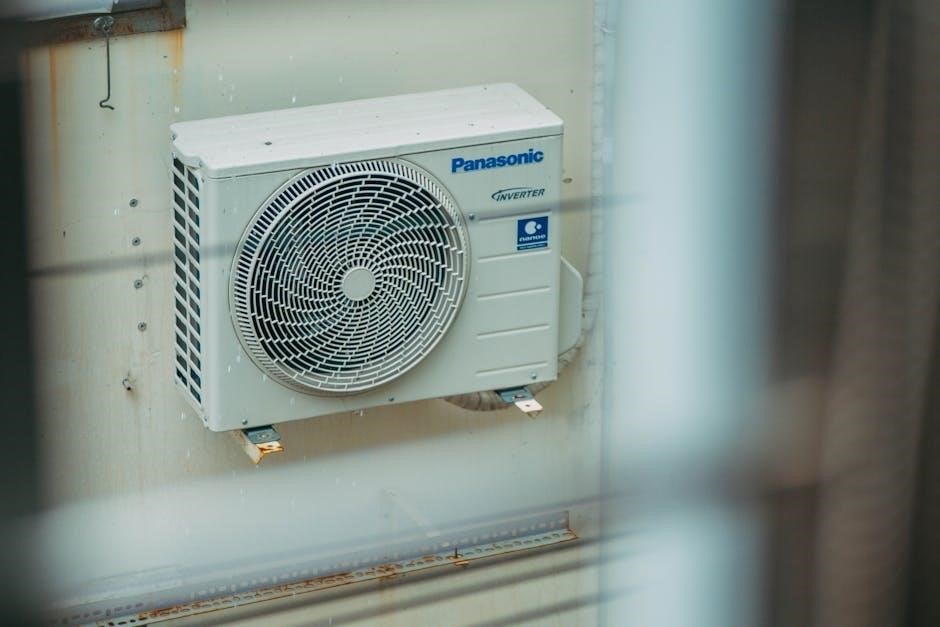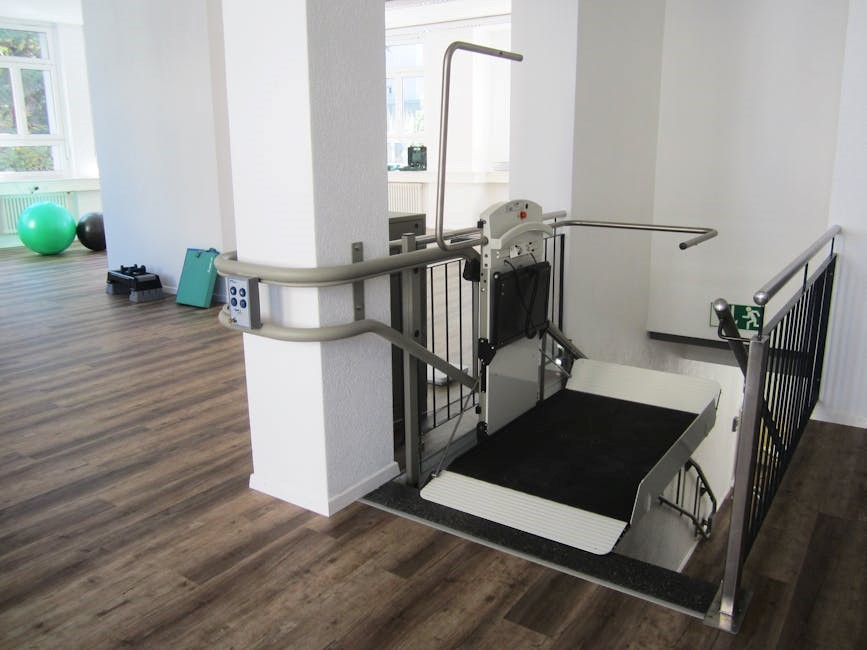Bistpower fans are renowned for their exceptional performance, durability, and sleek design, making them a popular choice among PC enthusiasts․ These fans are designed to provide optimal airflow while maintaining low noise levels, ensuring a balance between cooling efficiency and quiet operation․ With features like RGB lighting, PWM control, and compatibility with various water cooling systems, Bistpower fans are ideal for both aesthetic and functional upgrades․ Their high-quality construction and innovative designs make them a preferred option for custom PC builds and water cooling setups․

Compatibility and Requirements
When planning to install Bistpower fans, it is crucial to ensure compatibility with your system to achieve optimal performance․ Bistpower fans are designed to work seamlessly with a variety of PC components, including motherboards, radiators, and water cooling systems․ These fans are compatible with most modern motherboards that support PWM (Pulse Width Modulation) control, allowing for precise speed adjustments based on system temperatures․ Additionally, they are often equipped with ARGB lighting, which can be synchronized with motherboard ARGB headers for a cohesive lighting setup․
For radiator compatibility, Bistpower fans are optimized to work with popular radiator sizes, including 120mm, 140mm, and 360mm models․ They are also compatible with CPU water blocks, ensuring efficient cooling for both CPU and radiator loops․ The fans’ slim design and standard mounting holes make them suitable for installation in most PC cases without additional modifications․
System requirements for Bistpower fans include a compatible 4-pin or 3-pin fan connector on the motherboard or a separate fan hub․ For RGB functionality, ensure your motherboard has an ARGB header or use a compatible controller․ Some Bistpower fan models may require additional software for RGB customization, which can be downloaded from the manufacturer’s website․
Finally, always verify the physical dimensions of your case and radiator to ensure proper fitment․ Bistpower fans are designed to be versatile, but compatibility with specific components should be confirmed before installation․ By meeting these requirements, you can ensure a smooth and effective installation process․

Preparation for Installation
Before proceeding with the installation of Bistpower fans, proper preparation is essential to ensure a smooth and successful process․ Start by gathering all necessary tools and components, such as screws, mounting brackets, and power connectors․ If your Bistpower fan kit includes ARGB lighting, ensure you have an ARGB header on your motherboard or a separate RGB controller․ Additionally, check for PWM hubs or fan controllers if you plan to manage multiple fans through a single connection․
Next, prepare your PC case or radiator for installation․ Clean the area where the fans will be mounted to remove dust and debris, ensuring proper airflow and efficient cooling․ If you’re installing radiator fans, drain the coolant from your loop to prevent spills during the process․ For case fans, remove any protective covering from the fan mounting holes and ensure the case is grounded to prevent static discharge․
Safety is a top priority; Shut down your system completely and unplug the power cord before starting the installation․ Static electricity can damage sensitive components, so ground yourself by touching a metal object or wear an anti-static wrist strap․ Organize your workspace by laying out all tools and components in an accessible manner․ This includes screwdrivers, mounting hardware, and any additional cables required for RGB or PWM functionality․
Finally, review the installation guide provided with your Bistpower fan kit․ Familiarize yourself with the diagrams and instructions to understand the sequence of steps and any specific requirements for your setup․ If you’re unsure about any part of the process, consult online resources or seek advice from experienced builders; Proper preparation ensures that the installation proceeds without complications and that your Bistpower fans perform at their best․

Step-by-Step Installation Guide
Installing Bistpower fans is a straightforward process that can be completed with basic tools and careful preparation․ Follow these steps to ensure a successful installation:
- Mounting the Fans:
Begin by identifying the locations where you wish to install the fans․ For optimal airflow, consider placing intake fans at the front of your case and exhaust fans at the rear or top․ Align the fan screws with the mounting holes on your case or radiator and gently screw them into place․ Ensure the fans are securely fastened but avoid overtightening, which could damage the case or fan housing․

- Connecting Power and Control Cables:
Plug the fan power connectors into your motherboard’s PWM fan headers or a PWM hub․ If you’re using an RGB controller, connect the RGB cables to the appropriate ports on your motherboard or a separate RGB controller․ Ensure all connections are secure to prevent loose wires, which could cause malfunctions or safety hazards․
- Testing the Fans:
Power on your system and verify that the fans are spinning and functioning correctly․ Check the RGB lighting to ensure it is operating as expected․ If a fan is not spinning or the lighting is not working, inspect the connections and ensure they are properly secured․
By following these steps, you can successfully install your Bistpower fans and enjoy enhanced cooling performance and aesthetic appeal in your PC setup․

Testing the Installation
After successfully installing your Bistpower fans, it is crucial to test the installation to ensure proper functionality․ This step helps identify any potential issues early on and ensures optimal performance․
Start by powering on your system and observing the fans․ Verify that all fans are spinning and operating at expected speeds․ If you have installed RGB fans, check that the lighting is functioning correctly and synchronized with your system or controller․
Next, monitor the system’s temperatures to ensure the fans are providing adequate cooling․ Use software tools like HWMonitor or AIDA64 to track temperature changes under different workloads․ This will help you confirm that the fans are contributing effectively to your system’s thermal management․
Additionally, inspect the fan cables and connections to ensure they are secure and properly routed․ Loose connections can lead to malfunctions or inconsistent performance․ If you notice any issues, such as a fan not spinning or uneven lighting, refer to the troubleshooting section for potential solutions․
Finally, listen for unusual noises or vibrations, which could indicate improper mounting or imbalanced fan operation․ Adjust the fan mounts if necessary to eliminate any noise or vibration․
By thoroughly testing your Bistpower fan installation, you can ensure a reliable and efficient cooling solution for your PC setup․

Maintenance and Upkeep
Proper maintenance and upkeep of your Bistpower fans are essential to ensure their longevity and optimal performance․ Regular cleaning, inspection, and adjustments can prevent dust buildup, reduce noise, and maintain efficient cooling capabilities․
Start by turning off your PC and unplugging the power supply to ensure safety․ Use compressed air to gently remove dust from the fan blades, grills, and surrounding areas․ Avoid touching the fan blades to prevent damage or oil residue from your fingers․
Inspect the fan cables and connectors for any signs of wear or damage․ Secure any loose connections to prevent intermittent operation or complete failure․ If you notice frayed wires or corroded connectors, replace them immediately to avoid further issues․
For fans with removable bearings, apply a small amount of lubricant to keep them running smoothly and quietly․ However, avoid over-lubrication, as it can attract dust and degrade performance over time․
Additionally, check the fan mounts and screws to ensure they are tightly secured․ Loose mounts can cause vibrations and reduce the fan’s efficiency․ Tighten any loose screws, but be careful not to overtighten, as this could damage the fan or surrounding components․
Regularly update your fan control software or firmware to take advantage of the latest features and optimizations․ This can improve performance, reduce noise, and ensure compatibility with your system․
Finally, monitor your system’s temperatures and fan speeds over time․ If you notice a significant increase in temperatures or a decrease in fan performance, it may indicate a need for deeper cleaning or replacement of worn-out components․
By following these maintenance steps, you can extend the lifespan of your Bistpower fans, maintain their performance, and ensure your system runs smoothly and efficiently․

Troubleshooting Common Issues
While Bistpower fans are designed for reliability, users may encounter issues during or after installation․ Identifying and addressing these problems promptly can ensure optimal performance and longevity of your setup․
Fans Not Spinning: If the fans fail to start, check the power supply and connections․ Ensure the fan hub is properly connected to the motherboard or power supply unit (PSU)․ Verify that the PSU has sufficient power to support all connected fans․ If using PWM control, confirm the motherboard settings are configured correctly․ Loose or damaged cables can also cause this issue, so inspect and replace them if necessary․
Excessive Noise: Unusual noise from the fans may indicate dust buildup, improper installation, or worn-out bearings․ Clean the fans thoroughly with compressed air and ensure they are securely mounted․ If the noise persists, consider lubricating the bearings or replacing the fans if they are damaged beyond repair․
RGB Lighting Issues: If the RGB lighting is not functioning, check the ARGB header connection on the motherboard․ Ensure the correct software is installed and updated․ Some Bistpower fans require specific RGB controllers or hubs for proper operation․ Consult the user manual for compatibility and setup instructions․
Overheating: If your system overheats despite proper fan installation, verify that the fans are configured correctly in the BIOS or fan control software․ Ensure the fans are set to run at appropriate speeds for the system load․ Check for blockages in airflow, such as dust buildup in radiators or poor case ventilation․
Connectivity Problems: If the fan hub or controller is not recognized, restart your system and ensure all connections are secure․ Update the motherboard BIOS and fan control software to the latest version․ Consult the Bistpower support website for troubleshooting guides or contact customer service for assistance․
By addressing these common issues systematically, you can resolve most problems quickly and ensure your Bistpower fans operate at peak performance․

Optimization Tips
Optimizing your Bistpower fans ensures maximum performance, efficiency, and longevity․ Here are some expert tips to enhance your setup:
Optimal Fan Placement: Position your fans strategically to maximize airflow․ Intake fans should be placed at the front or bottom of the case to draw in cool air, while exhaust fans should be mounted at the rear or top to expel hot air․ This balanced airflow ensures efficient cooling and minimizes thermal bottlenecks․
Cable Management: Proper cable management not only improves aesthetics but also enhances airflow; Use cable ties or sleeves to keep wires organized and away from fan blades․ This prevents obstruction and ensures unimpeded airflow for optimal cooling performance․
Fan Curve Configuration: Use your motherboard’s BIOS or fan control software to set custom fan curves․ This allows you to adjust fan speeds based on temperature thresholds, striking a balance between noise and cooling efficiency․ For silent operation, configure fans to run at lower speeds during idle or low-load scenarios․
Regular Maintenance: Clean your Bistpower fans periodically to remove dust and debris, which can impede airflow and reduce performance․ Use compressed air to gently blow out dust from the blades and housing․ Avoid using liquid cleaners, as they may damage the fan motors or electrical components․
RGB Lighting Optimization: If your Bistpower fans feature RGB lighting, optimize their visual appeal by synchronizing the lighting effects with other system components․ Use compatible software or controllers to create a cohesive lighting scheme that enhances your build’s aesthetic without compromising performance․
Firmware and Software Updates: Keep your fan control software and firmware up to date․ Manufacturers often release updates to improve performance, add features, or fix compatibility issues․ Regular updates ensure your fans operate at their best and remain compatible with your system․
By implementing these optimization tips, you can maximize the performance and efficiency of your Bistpower fans, ensuring a well-cooled and visually stunning PC build․

Advanced Configurations
For enthusiasts seeking to push their Bistpower fan setup to the next level, advanced configurations offer unparalleled customization and performance․ These configurations allow users to tailor their fan behavior, lighting, and integration with other system components for a seamless and optimized experience․
Custom Fan Profiles: Utilize software like motherboard BIOS tools or dedicated fan control programs to create custom fan profiles․ This allows precise control over fan speeds based on temperature inputs from various system components, ensuring optimal cooling while minimizing noise during low-load scenarios․
RGB Synchronization: Bistpower fans with RGB lighting can be synchronized with other system components using software like ASUS Aura Sync, MSI Mystic Light, or Gigabyte RGB Fusion․ This creates a cohesive lighting scheme that enhances the visual appeal of your build․ For advanced setups, consider using a dedicated RGB controller to manage complex lighting effects․
Multi-Fan Hubs: For systems with multiple fans, consider using a PWM fan hub like the Bitspower PWM Fan Multi Function HUB․ This hub allows you to connect up to 10 fans to a single motherboard header, simplifying cable management and enabling unified control over all connected fans․ It also supports PWM signals, ensuring precise speed control across all fans․
Water Cooling Integration: Bistpower fans are often used in water cooling setups to enhance radiator performance․ Configure your fans to run in push-pull configurations for maximum airflow through radiators․ Additionally, sync the fan speeds with water block temperatures to maintain optimal cooling efficiency․
Dual Pack Fan Configurations: For high-performance systems, consider installing dual packs of Bistpower fans․ These configurations provide redundant cooling and can be controlled independently or in unison, offering flexibility for advanced cooling needs․
Advanced Lighting Effects: Experiment with advanced RGB lighting effects such as wave, ripple, or breathing patterns․ These effects can be programmed using software or controlled via a dedicated remote, adding a dynamic visual element to your build․
By implementing these advanced configurations, users can unlock the full potential of their Bistpower fans, achieving a perfect balance of performance, customization, and aesthetics․
Installing and configuring Bistpower fans is a straightforward yet impactful way to enhance your PC’s cooling performance, aesthetics, and overall functionality․ With their high-quality design, customizable RGB lighting, and compatibility with advanced water cooling systems, Bistpower fans are a versatile solution for both casual users and enthusiasts․ Whether you’re building a new system or upgrading your current setup, these fans offer a reliable and efficient way to maintain optimal temperatures while adding a touch of elegance to your build․
Throughout this guide, we’ve covered everything from the basics of Bistpower fans to advanced configurations, ensuring you have the knowledge to make the most out of your installation․ By following the step-by-step instructions and leveraging the features of these fans, you can achieve a balanced system that operates smoothly under various workloads․ Additionally, the availability of detailed manuals, online resources, and community support makes the process even more accessible for users of all skill levels․
As you complete your installation, remember to explore the advanced features, such as customizable fan profiles, RGB synchronization, and multi-fan hub configurations, to unlock the full potential of your Bistpower fans․ With proper maintenance and care, these fans will provide years of reliable service, ensuring your system remains cool, quiet, and visually stunning․
